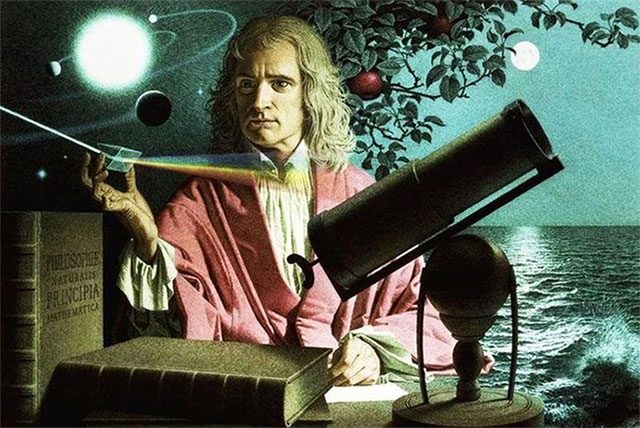Three centuries ago, when Isaac Newton recorded his timeless laws of motion, he likely could not have imagined that they would still be debated today.
The principles written by Newton in Latin outline three universal laws that describe how objects move in the universe. These principles have been translated, copied, and debated over a long period of time.

Physics genius Isaac Newton. (Photo: Ieltsintaiwan).
However, according to a philosopher of language and mathematics, we may have misunderstood the precise wording of Newton in his first law of inertia.
Incorrect Translation
Philosopher Daniel Hoek from Virginia Tech (USA) aims to “clarify the truth” after discovering a “clumsy” translation in the English version of Newton’s Principia published in 1729.
Based on this translation, countless scholars and teachers have interpreted Newton’s first law of inertia to mean that an object will maintain its state of rest or uniform motion in a straight line at constant speed, unless acted upon by an external force.
This interpretation seems reasonable until we realize that external forces are always present, something that Newton surely considered when defining his law.
Upon reviewing the archives, Daniel Hoek recognized that the popular interpretation of the law of inertia may have been mistaken. It was not until 1999 that two other scholars noted a Latin word that had been overlooked – “quatenus”, which means “insofar” (to the extent/if), rather than “unless”.
This led to a misunderstanding, suggesting that the law of inertia only pertains to objects remaining in a state when no force is acting upon them, while Newton actually wanted to emphasize that any change in an object’s motion is due to external forces.
“By restoring the word ‘insofar’ to its proper place, the scholars in 1999 revived one of the fundamental principles of physics”, Hoek explained in a blog post.

A top is an example Newton used to explain the law of motion. (Photo: Science Alert).
Controversy
Daniel Hoek published his research in Philosophy of Science in 2022. However, this significant adjustment has yet to be widely adopted. Even now, this adjustment still faces the weight of centuries of copying and disseminating the old translation.
Some scientists argue that Hoek’s new interpretation is too different from traditional understanding. Others find it too obvious to warrant debate.
Ordinary people might agree that the two translations sound similar in terms of meaning. Hoek acknowledges that the reinterpretation does not change the nature of physics but helps clarify Newton’s thoughts when drafting this law.
“There has been much debate about the true nature of the law of inertia”, Hoek explains.
If we accept the popular translation that an object moves in a straight line until some force causes it to change, then the question arises: Why did Newton write a law about objects not subject to external forces when such a state does not exist in our universe, where gravity and friction are always present?
Philosopher George Smith from Tufts University, USA, and an expert on Newton’s writings, stated that: “the core meaning of the first law is to infer the existence of force.”
In fact, Newton provided three specific examples to illustrate this law, the most notable being a spinning top. As we know, a top will slow down in a narrow spiral due to air friction.
“By providing this example, Newton clearly showed us how he understood the first law, which applies to objects accelerating under the influence of force – that is, applicable to objects in the real world”, philosopher Daniel Hoek remarked.
Hoek believes that this new understanding clarifies one of Newton’s most fundamental ideas, which was entirely revolutionary at that time: that planets, stars, and other celestial bodies all follow the same physical laws as objects on Earth.
“All changes in speed and direction are governed by Newton’s first law”, he stated.
This discovery not only changes our perspective on physics on Earth but also makes us feel more connected to the vast universe.


















































